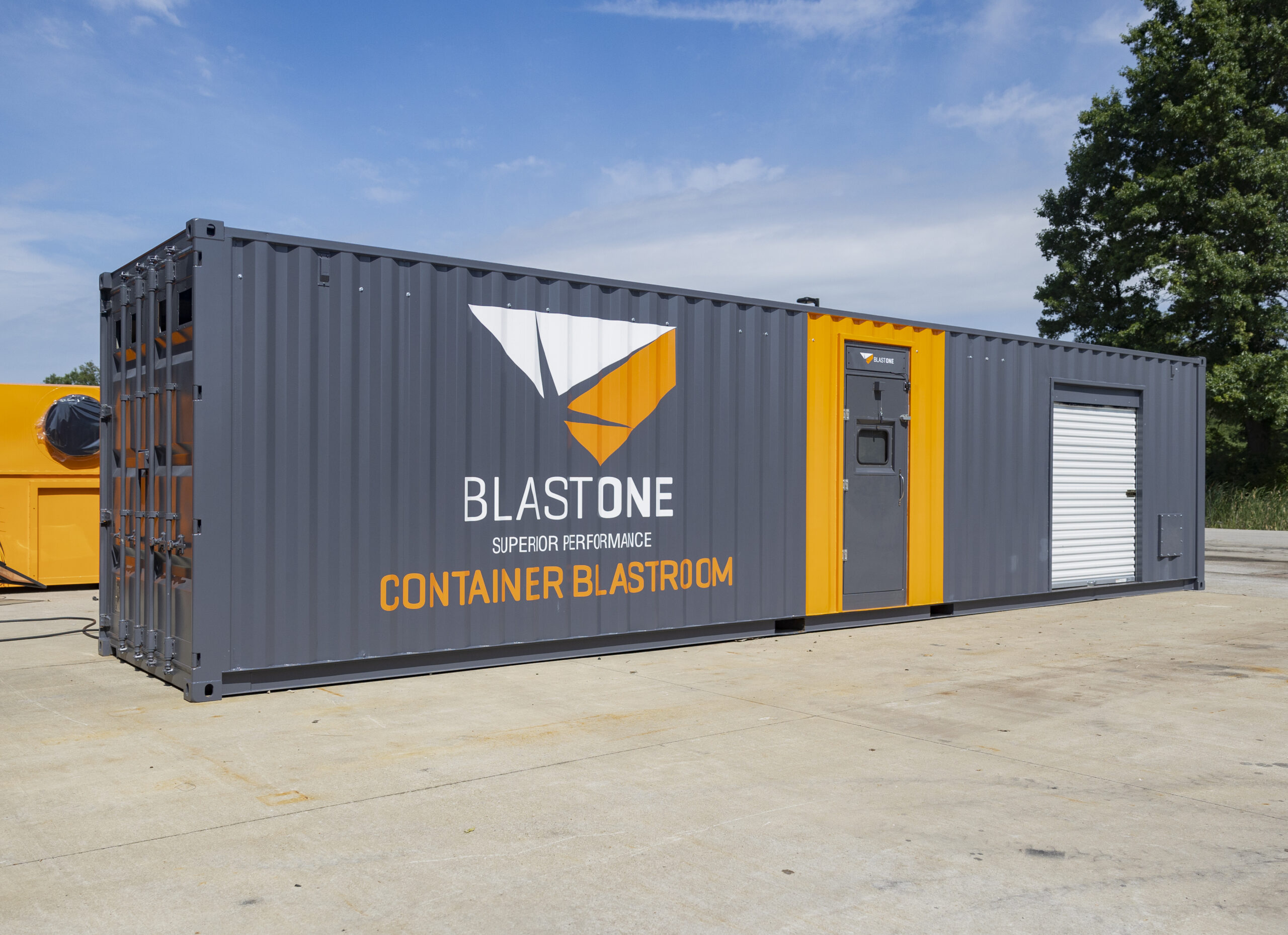DIY: 5 Easy Steps To Set-Up A Temporary Blasting Enclosure
Creating a temporary blasting enclosure on jobsites is a common practice, especially when you need a controlled environment for small projects or occasional blasting tasks. Here’s a straightforward guide to setting up your temporary blasting area using shipping containers.
1. VENTILATION
Proper ventilation is critical for visibility and safety. If the blaster cannot see what they’re doing, it compromises the quality of work and increases the risk of accidents. Poor ventilation can lead to rework, costing time and money. Ensure that the airflow passes directly past the blaster and ventilates from the container’s doors to the back.
2. AIR FLOW
For optimal airflow, direct it past the blaster and ensure it ventilates out the back of the container. When using ducting, it’s typically installed at the front opening of the container. However, if the ducting operates with a suction vacuum, it mainly pulls in fresh air, which isn’t effective for dust removal. If a fan is used to blow air inward, creating positive pressure, it often causes dust clouds to accumulate at the back, limiting visibility.
To efficiently capture dust and prevent abrasive from escaping, install a baffle wall that extends from the top of the container to 18 inches off the floor, placing it approximately 12 inches from the back of the container. Next, cut a 12 to 20-inch hole in the back of the container near the top and attach a ventilation duct to this opening.
To generate the necessary airflow, use a simple Blue Wizard fan. For more permanent setups or enhanced dust removal, consider renting a dust collector to improve the system’s efficiency.
3. LIGHTING
Excellent lighting is essential for clear visibility during blasting. Install 4-5 lights around the top rim, angled toward the center of the container. This setup ensures the blaster can see their work clearly, reducing the need for rework.
4. STOP ABRASIVE ESCAPING
To prevent abrasive from exiting the enclosure, install simple doors with chicken mesh and filter sheeting or shade cloth. This setup allows airflow and natural light while containing the abrasive. Having a filter sheeting over the doors will still allow good airflow and some natural light into the area.
5. RECOVERING ABRASIVE
To collect abrasive, add a piece of plywood at a 45-degree angle near the back baffle area. This setup helps the abrasive flow back into the blast area, making it easy to collect with a shovel for disposal. Consider adding a lean-to on the container’s side for a blast pot and easy disposal.
Note 1: This set up is not a blasting area that allows you to recycle your abrasive, if that is your aim, you will benefit from a proper blastroom. We can help you with that, but it typically involves a discussion to get your needs met.
Note 2: This is strictly touching on a blasting area, talk to us if you need a painting set up, a painting area has to be explosion-proof and requires some other considerations
 My Account
My Account





